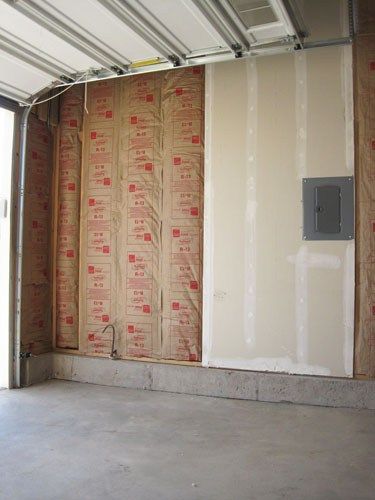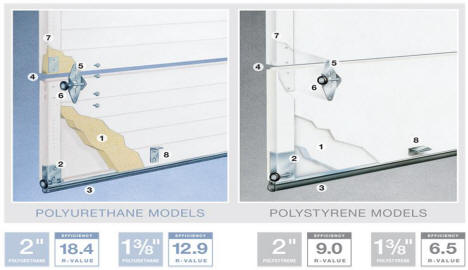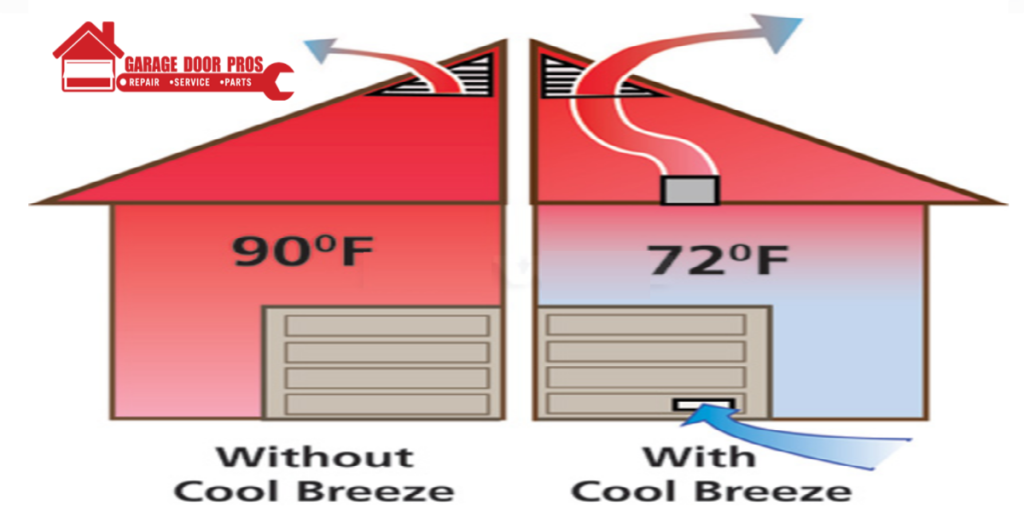Keep A Cool Garage During The Hot Summer Months
The summer months are upon us and installing a garage door cooling system would be a good addition to your homes overall eco system.
Maintaining a cooler garage has multiple benefits to the home owner. Keeping a consistently cooler area in the garage is not only more enjoyable when doing work or operating machinery but will also have a positive effect on your home cooling cost, assuming you maintain an attached garage.
Where To Start
When addressing your garage's cooling system we would recommend taking a comprehensive approach and addressing items on a level of importance. Before you go out and buy an exhaust fan, duct work, sheet metal saws and all the other tools and items needed you should start with the essentials.
First Item to Address: Insulation

When thinking about installing a garage cooling system we would suggest to first address your garage door insulation as well as garage ceiling and adjoining wall insulation. While most people think warmth when they hear the word "insulation", maintaining a well insulated garage can actually keep thinks cooler in the summer months.
The methods in which insulation is designed are formulated to perform both heating and cooling benefits. With out going in to great detail about insulation construction technology lets just lay it out in layman's terms. Insulation acts like a protective barrier between environments that maintain different temperature levels.
So if your garage is cool and the out site temp is hot, insulation will help maintain that cooler temperature inside. The same principle can be applied to your homes adjoining walls. With out a properly vented and insulated garage, a home owners garage will average between 15 and 20 degrees warmer than the out side temperature. This means if its a warm 75 degree day your garage is averaging an exhausting 95 degree temp.
When your garage temp starts to rise to this level with out proper insulated adjoining walls, your home will actually experience a large amount of radiant heat. This will not only make for more uncomfortable living conditions but will also take a toll on your energy bill if running AC. While this may not be a break the bank situation for cooling cost, maintaining insulation in the garage during the winter months will again be to your advantage. Its basically a two for one benefit.
Insulated Garage Door Installation

Once you have properly insulated walls its time to think about either attempting a DIY garage door insulation project or calling a professional for installation of a factory constructed insulated garage door.
This is something that the Garage Door Pros are well versed in and would be happy to help in making a suggestion and performing a cost effective installation .
Second Item to Address: Garage Door Ventilation and Air Flow Systems
By the laws of science heat will rise while cooler temperatures will lay low. Applying this understanding to your garage door venting system will help you in making a more hospitable environment and maintain a cooler over all home eco system.
While there are a few different systems on the market that can be installed to create this ventilated air flow we have selected two to highlight.
Vent-A-Garage Cooling | Cost: Under $100

This particular system is made of up two exhaust fans, two vents, power hook-up extension and a thermostat for control. The system will require you to make 4 square cuts into your garage door, which will then be fill with the vents and fans. By expelling the hot air that raised to the top of the garage roof , cooler air by laws of science will be drafted in through the lower vents. You may need to higher a professional home roofer for this . This garage door cooling system can be found on Amazon.
Garage Vent Cooling System | Cost: Around $300
While the Garage Vent Cool Breeze system is more costly it is by far more industrial and aggressive. If you have a larger garage or live in more extreme conditions this may be the better option for your needs. Again this particular system comes equipped with a thermostat but also features a no maintenance moter and fire dampening unit for building codes.
